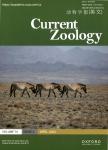Applications of next-generation sequencing to the study of biological invasions
Applications of next-generation sequencing to the study of biological invasions作者机构:Ocean and Earth Science National Oceanography Centre Southampton University of Southampton SO 14 3ZH UK Centre for Biological Sciences Life Sciences Building 85 University of Southampton Southampton SO 17 1B J UK
出 版 物:《Current Zoology》 (动物学报(英文版))
年 卷 期:2015年第61卷第3期
页 面:488-504页
核心收录:
学科分类:0907[农学-林学] 07[理学] 08[工学] 09[农学] 071007[理学-遗传学] 090102[农学-作物遗传育种] 0710[理学-生物学] 090705[农学-野生动植物保护与利用] 0905[农学-畜牧学] 0906[农学-兽医学] 0901[农学-作物学] 0836[工学-生物工程] 0713[理学-生态学]
主 题:生物入侵 测序 基因组分析 应用 转录组学 基因表达 DNA含量 信息分析
摘 要:Through the widespread implementation of next-generation sequencing (NGS), analyses of the whole genome (the entire DNA content) and the whole transcriptome (the genes being expressed) are becoming commonplace. NGS enables the analysis of a vast amount of previously unattainable genetic information. Despite this potential, NGS has yet to be widely implemented in genetic studies of biological invasions. The study of the genomic causes and consequences of biological invasions allows a deeper understanding of the molecular mechanisms underpinning the invasion process. In this review, we present a brief introduction to NGS followed by a synthesis of current research in the genomics and transcriptomics of adaptation and colonization. We then highlight research opportunities in the field, including: (1) assembling genomes and transcriptomes of non-model organisms, (2) identifying genomic regions and candidate genes underlying evolutionary processes, and (3) studying the adaptive role of gene expression variation. In particular, because introduced species face a broad range of physiological and biotic challenges when colonizing novel and variable environments, transcriptomics will enable the study of gene regulatory pathways that may be responsible for acclimation or adaptation. To conclude, we identify a number of research approaches that will aid our future understanding of biological invasions.



